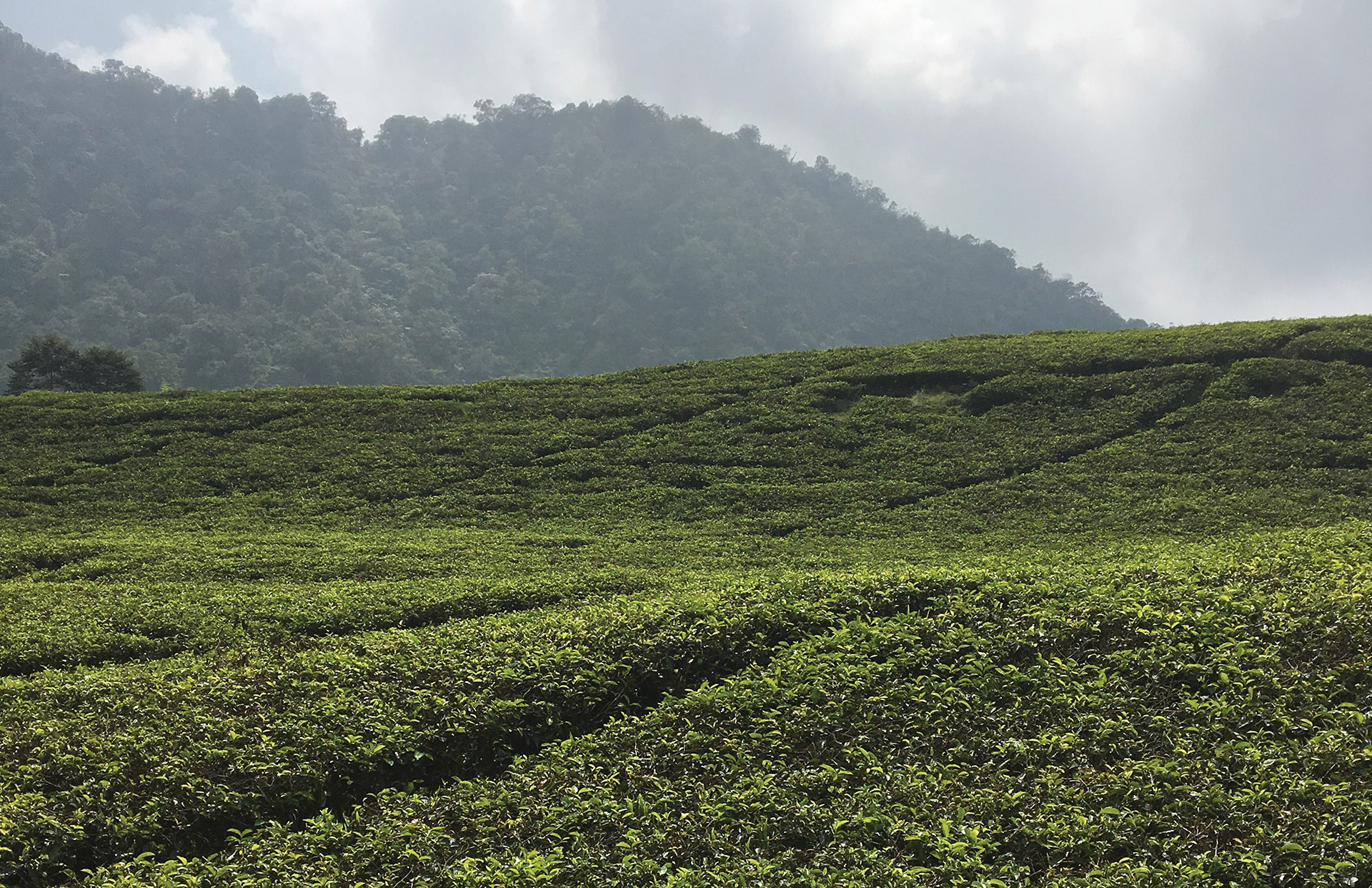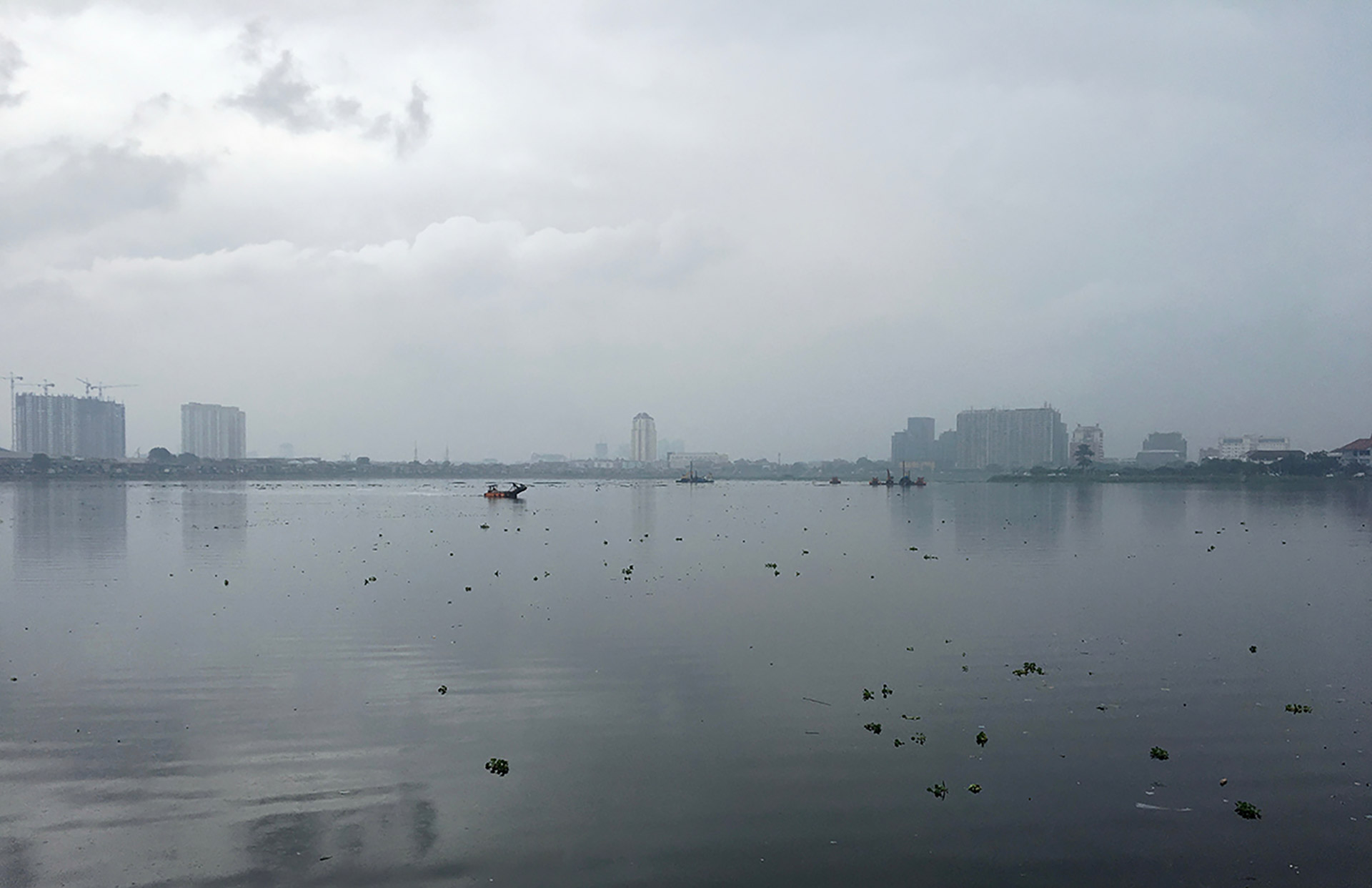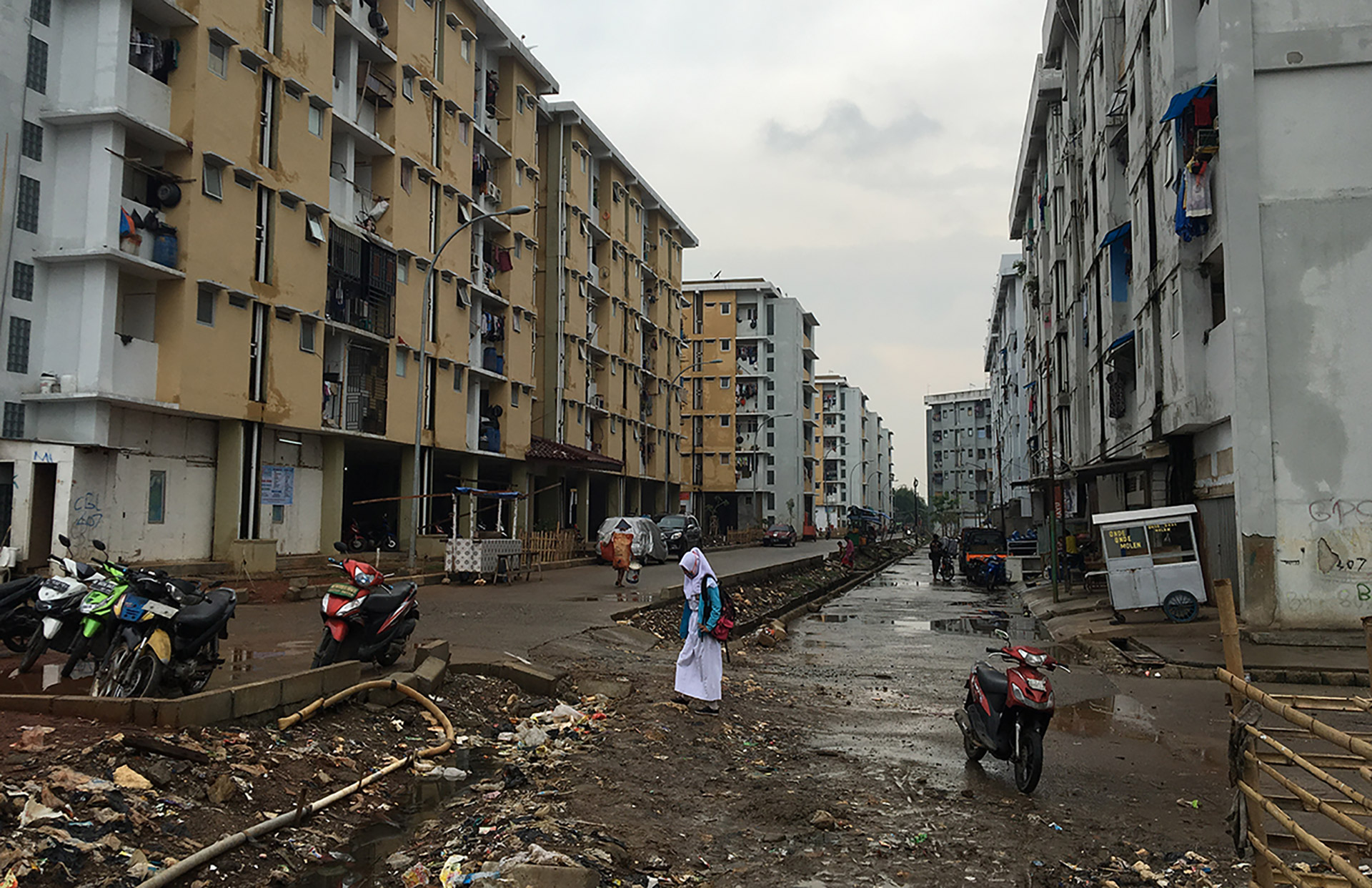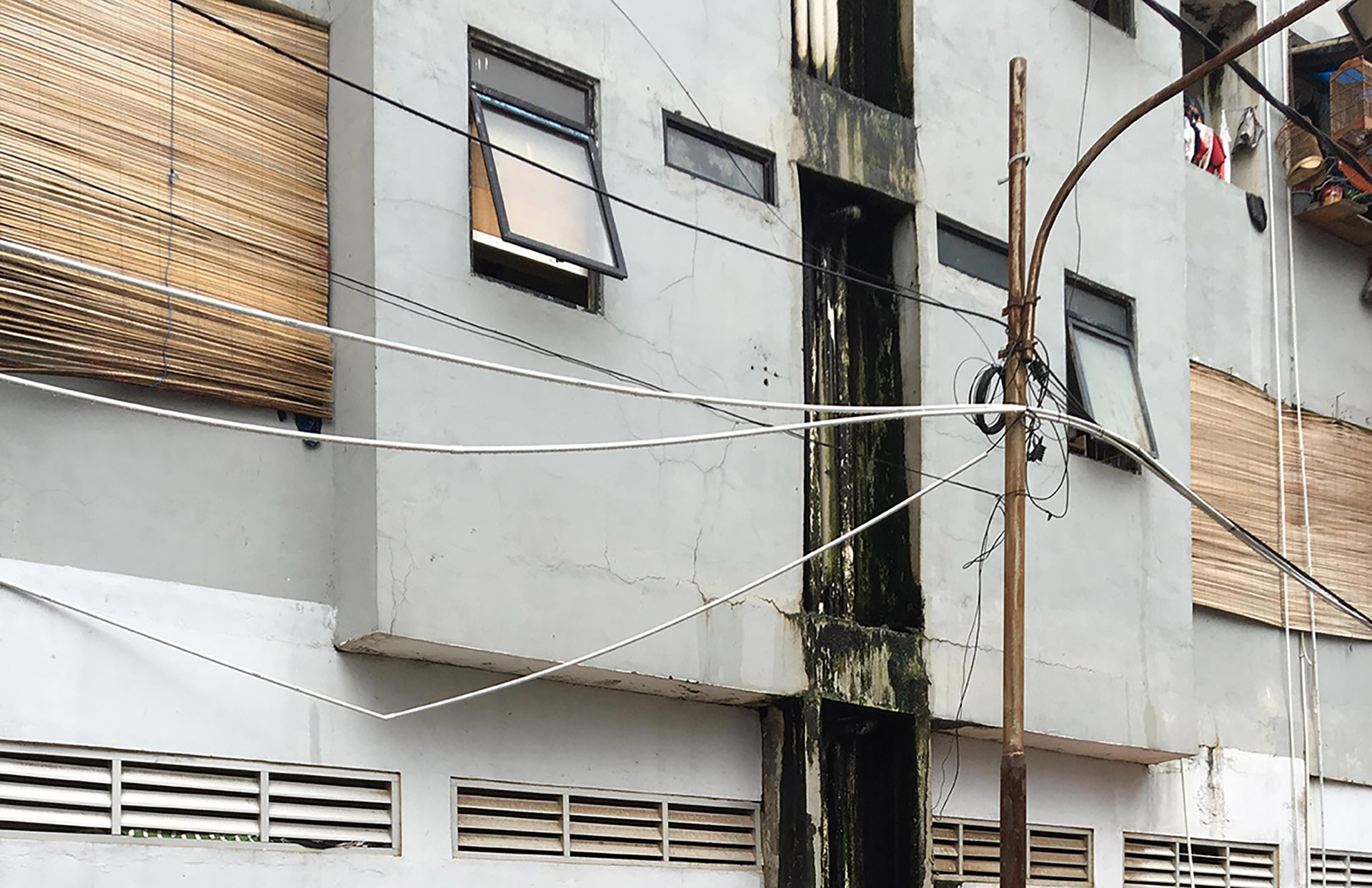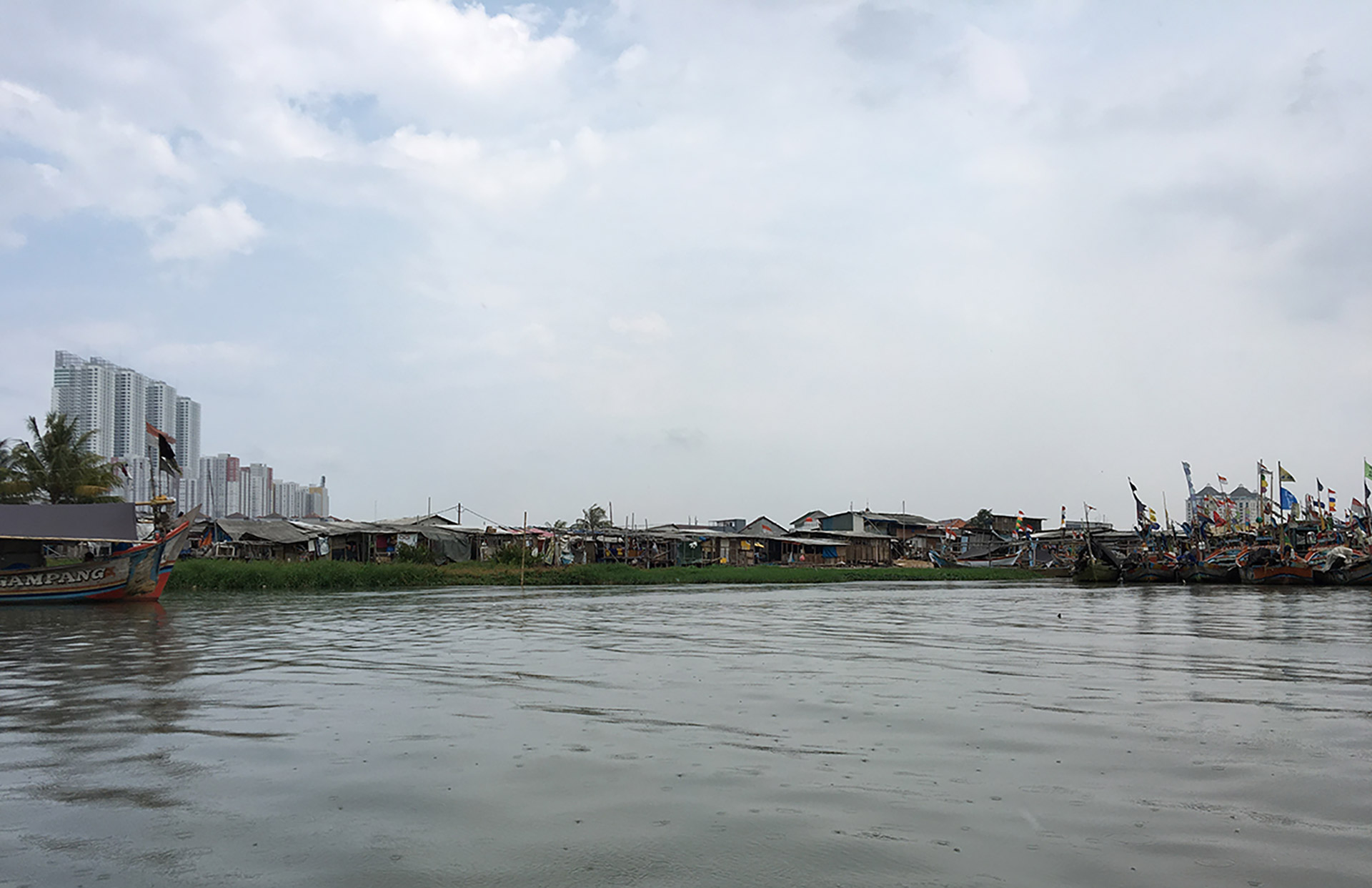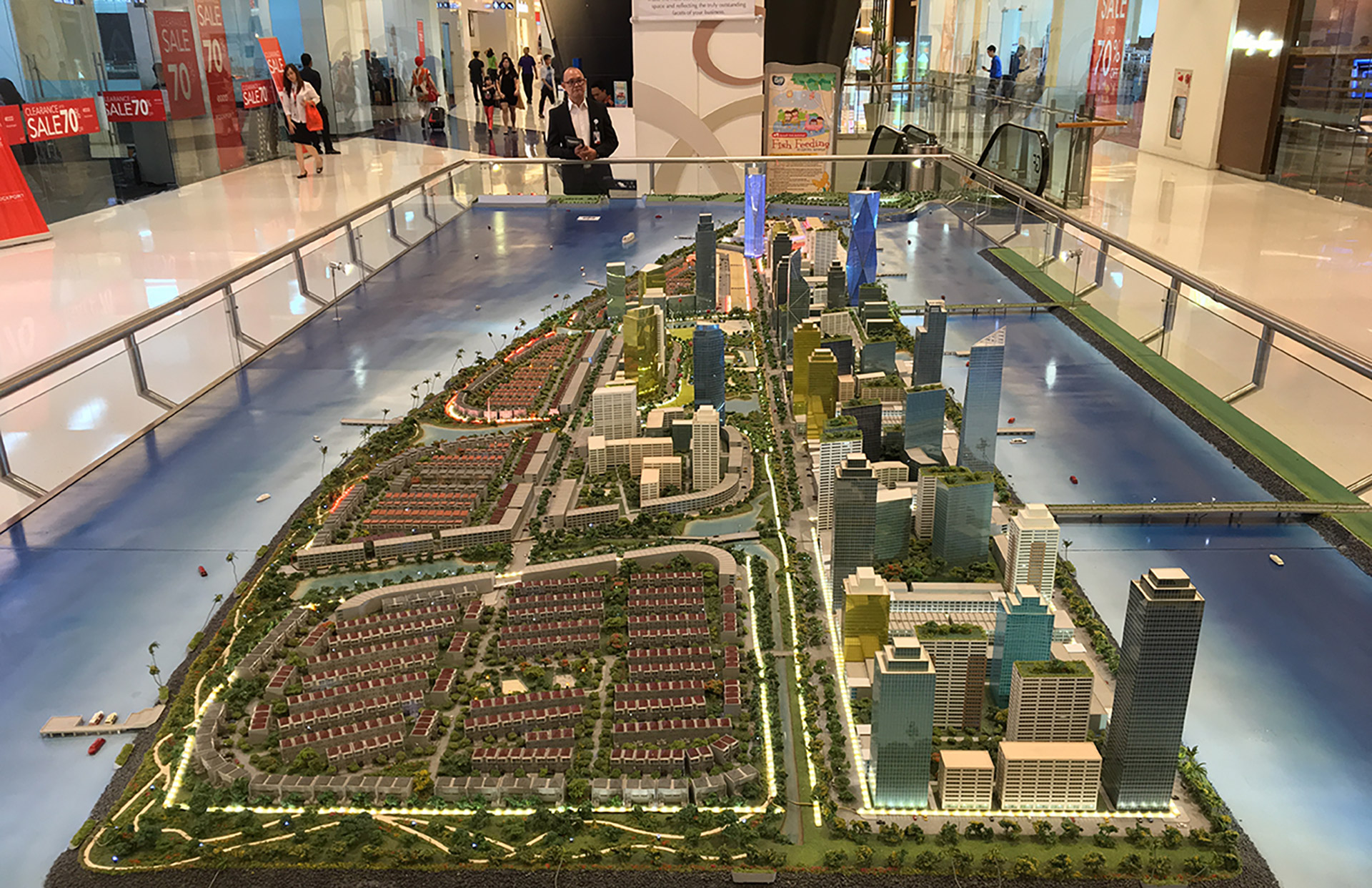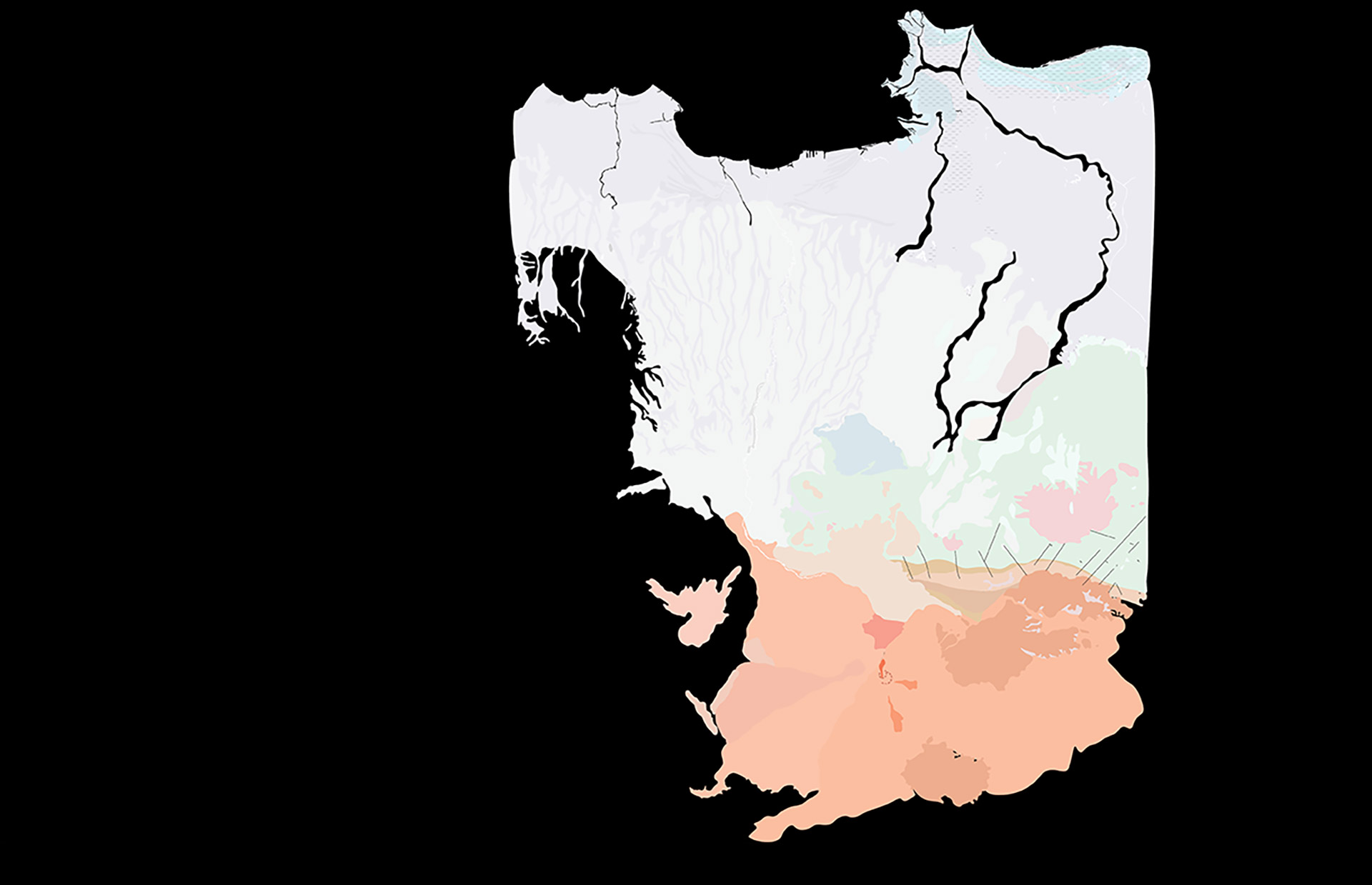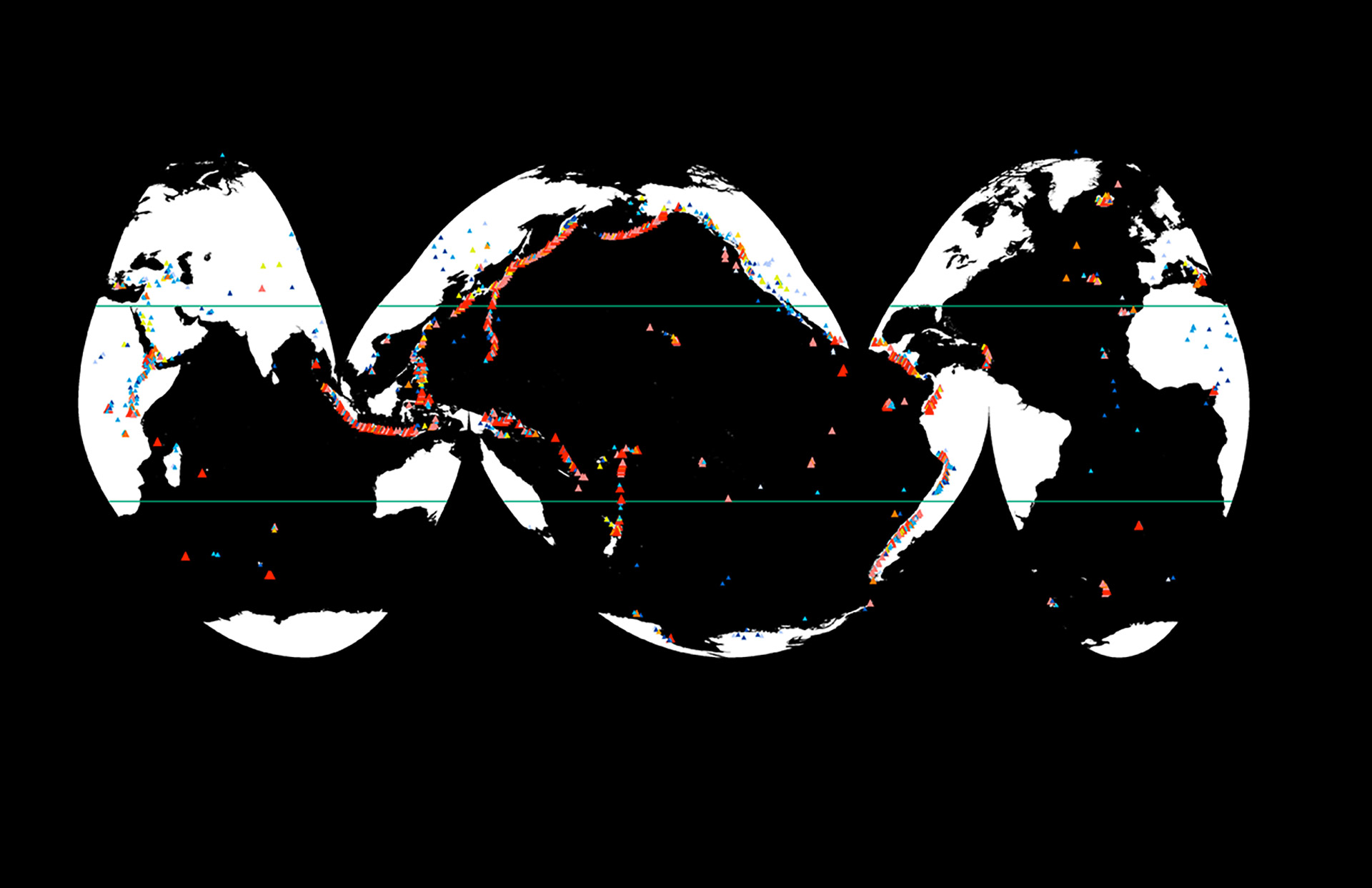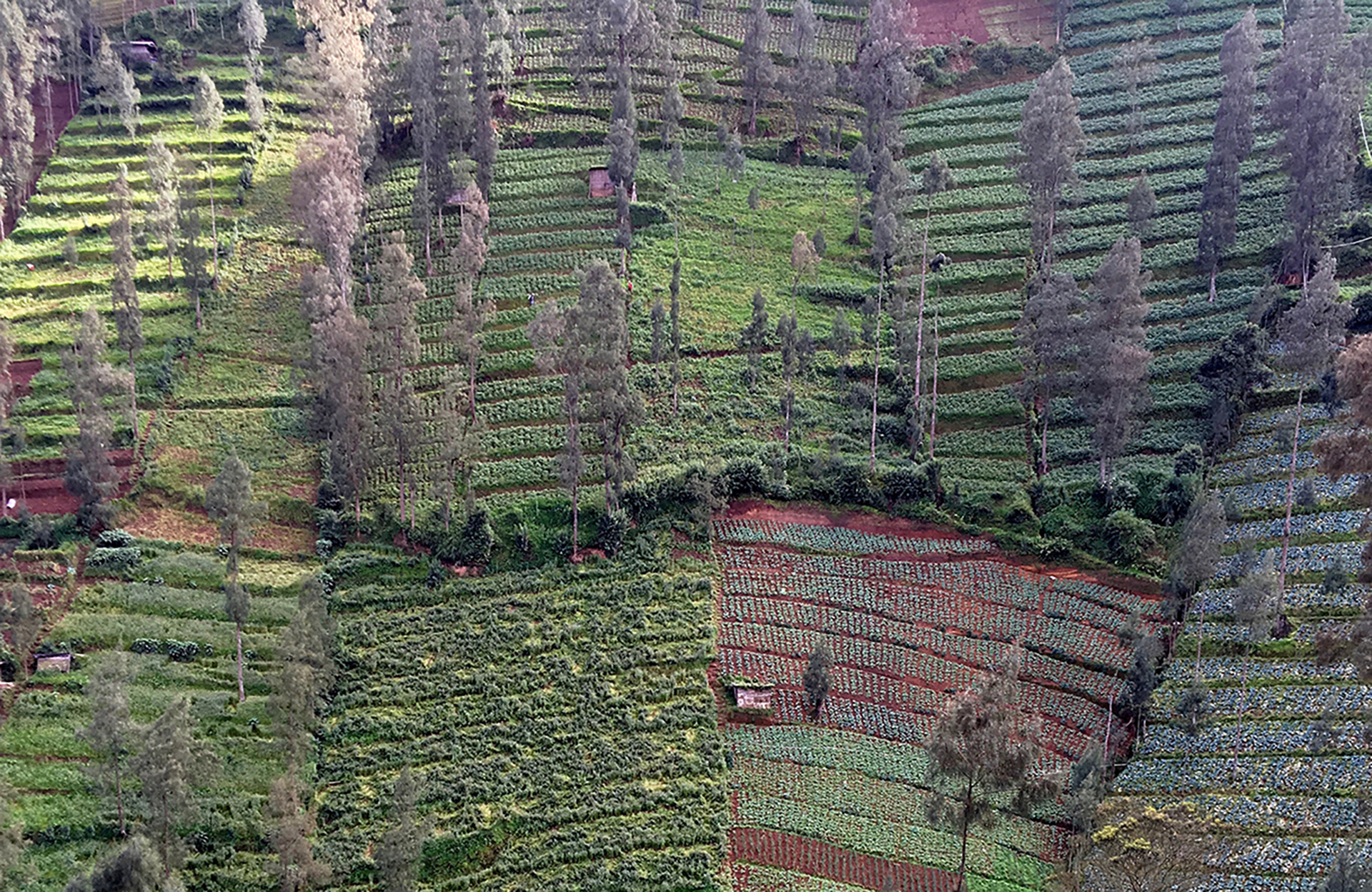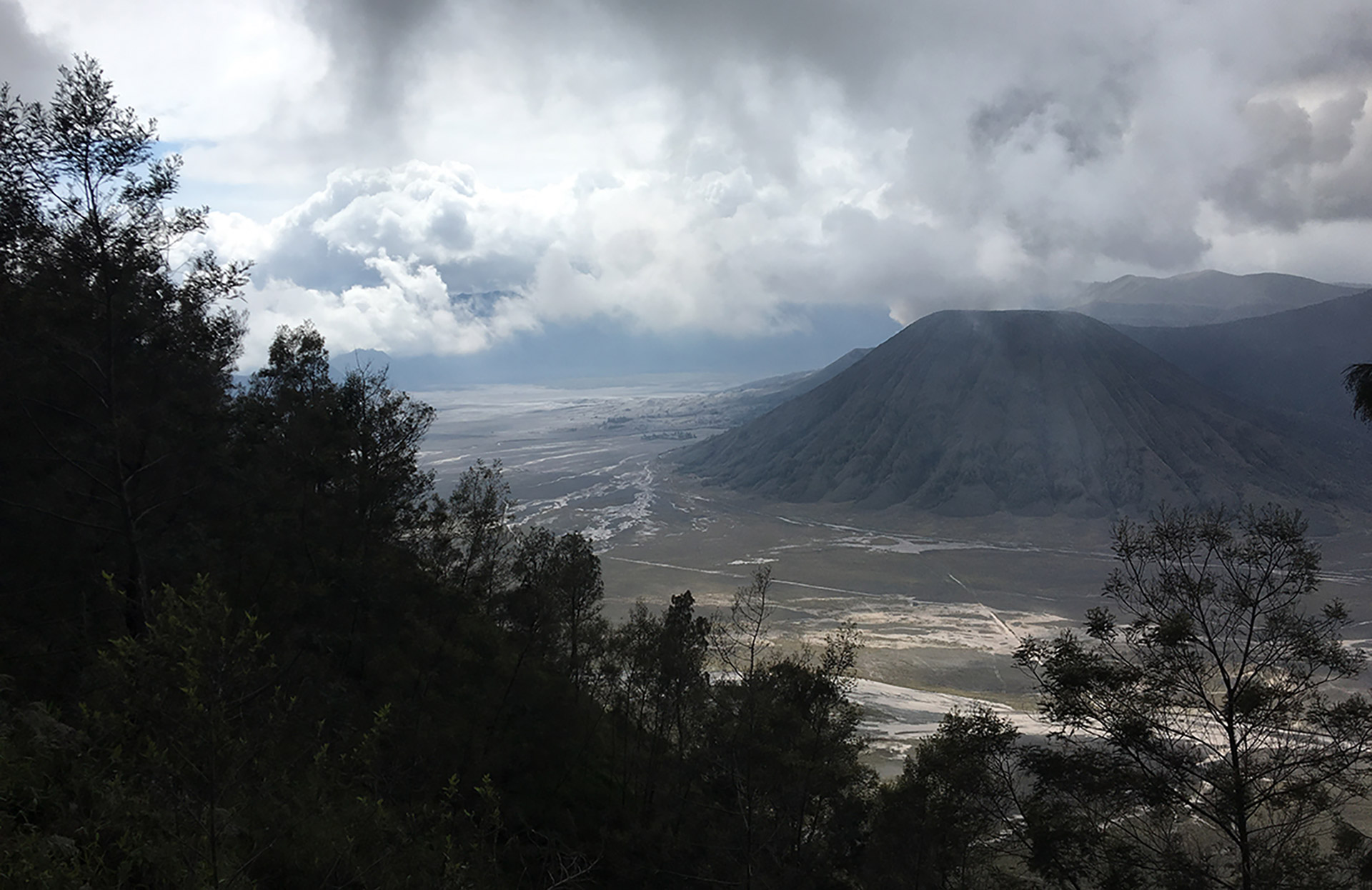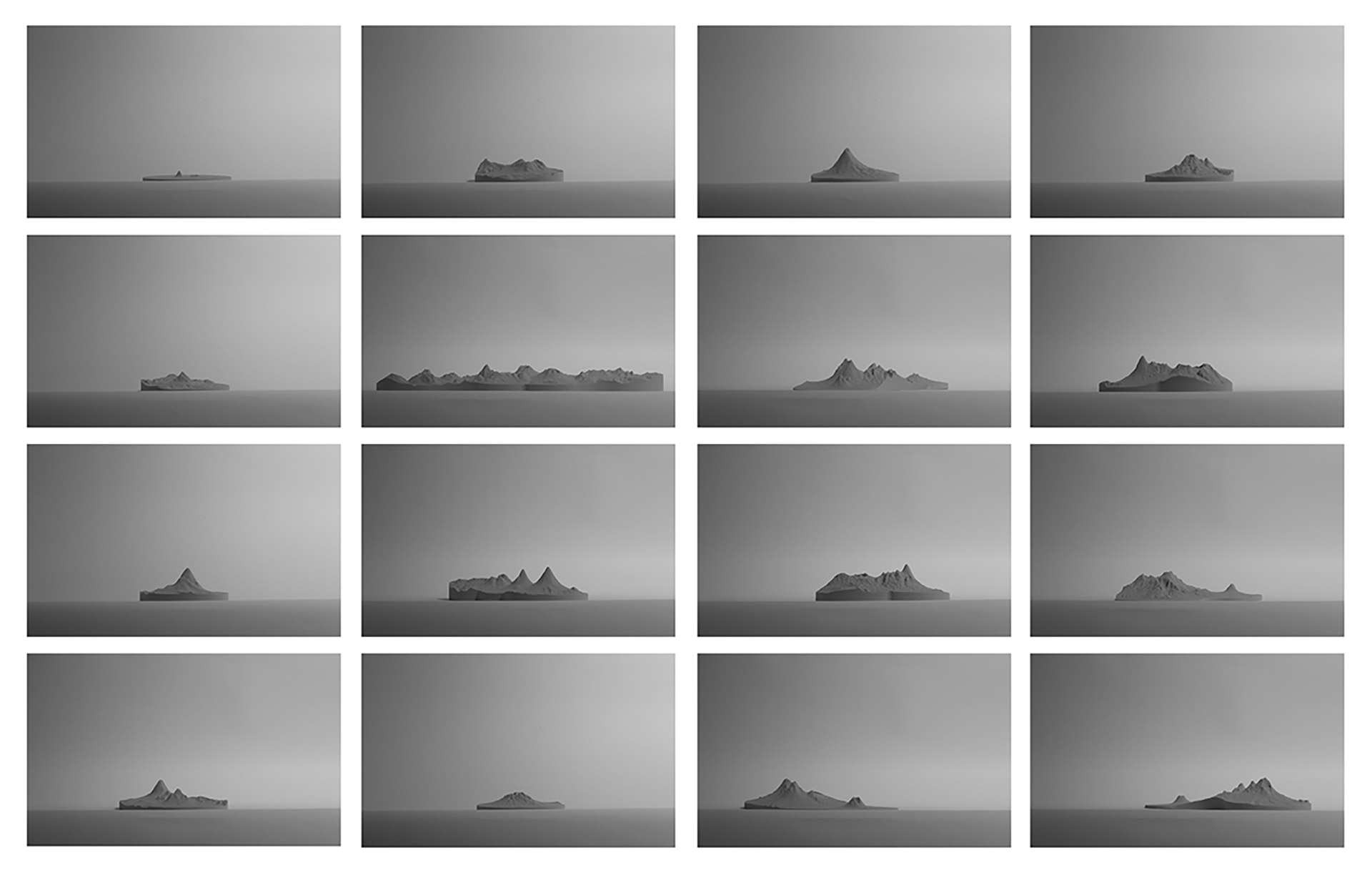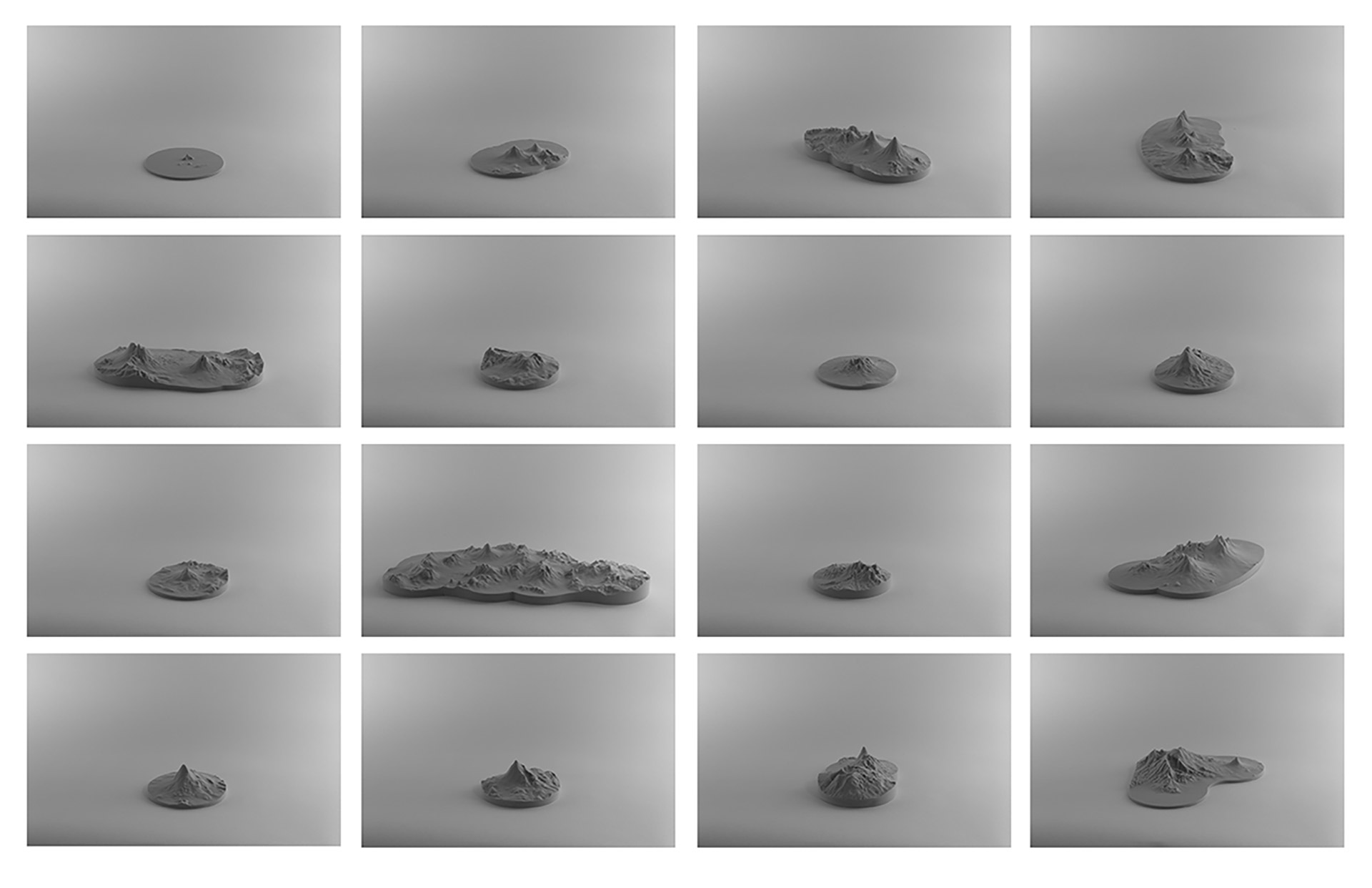Jakarta’s Orogeny: Inhabiting Java’s Volcanic
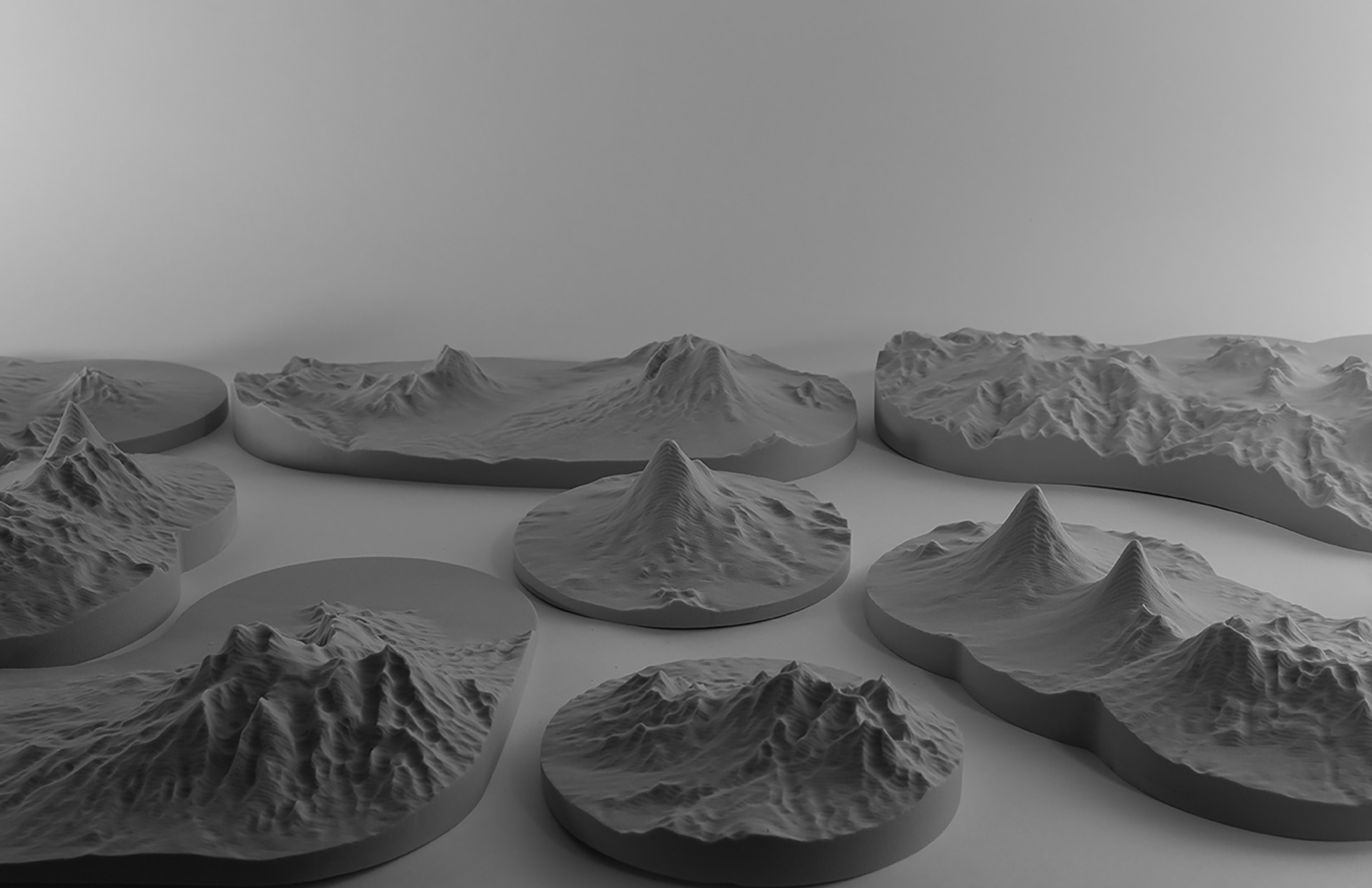
Volcanic assembly. Oblique plan view of all active volcanoes in Java, Indonesia
by Pedro Aparicio Llorente (MDes ULE ’16), recipient of the Gerald M. McCue Medal, and Namik Mačkić (MDes RR ‘16)
Java belongs to those regions of the Earth where geologic time is accelerated to an observable emergence. Volcanic activity has not only built the landmass of the island, with lava flows, lahars, and air-and water-borne ash, it has also spawned many of the most ingenious and resilient human cultures on the planet.
Investigating and imaging this active ground in relation to patterns of human activity, this project situates the most densely populated island on Earth as a vast geomorphic machine. The research is visualized through a longitudinal section taken from the Java Sea to the Sunda Trench to represent the role of volcanoes as urban centers, as spinal cords of socio-spatial organization.
Inhabiting Java’s Volcanic speaks of a place where geology and urbanism meet. Combining on-site audiovisual documentation with geospatial analysis, animated cartographies with graphical projections, this research places the observer within the oscillating encounters between the tectonic expression of the Ring of Fire and the climactic gradients of the Southeast Asian Monsoon.
As the planet’s material recycling patterns manifest in practices at a human scale, the distance between geologic activity and everyday life becomes increasingly shortened. Here, a geologic domestic materializes.
With the aim of opening new ways to conceive of and adapt to our planet’s accelerated environmental variations, we present Java’s volcanic slopes as an urbanistic precedent, one that harbors a logic of practice synchronized with the material agencies native to the island’s morphological flux. Within this alternative paradigm of inhabitation, knowledge is built and recalibrated to the processes and contingencies of a volcanic ground. The building capacity of the Earth, itself, is culturally absorbed and cultivated: a social production of geotechnicity. Inhabiting Java’s Volcanic tells of a regional framework with global and interdisciplinary implications: an example to seek, foster, and build upon the significant depths of the geologic and the altitudinal variations of the atmospheric in designing with environmental change.
Jakarta epitomizes and defies the definition of a megacity. The capital of South-East Asia’s largest economy and the world’s second most populated metropolitan area appears as an agglomeration of villages, stretched across the 21st century mutation of a colonial entrepot. Interconnected with the interior of the island of Java through a capillary system of social and economic relationships, these settlements with their attendant forms of mobility contain salient elements of a long-standing regional superstructure. Tracing these features, we have uncovered a mesh of patterns that stretches across a Javanese landscape that seems to emerge out of the geologic.
For four centuries, both under Dutch colonial rule (1618–1945) and sovereign Indonesian government (1945–), the alluvial plain of Jakarta has been subjected to an aggressive, imported model of landscape alteration. Within the total package of the Dutch mercantile city, consolidation of the shoreline and channelization of watercourses have accompanied fortification and grid. From early on, floods and diseases breeding in the stagnant waters of the canals would testify to the local failure of this engineering paradigm of normalization and defense. The uncontainable growth of Jakarta as the capital of the independent Indonesia has only exacerbated the environmental externalities of the colonial project. In the 21st century, it is the rhetoric of urban vulnerability that helps perpetuate it, by continuing to erect rigid barriers against environmental contingency. Currently several mega-projects are underway that purport to address the recurrent floods, severe pollution, land subsidence, and sea level rise, while reclaiming the shallow Jakarta Bay as a new waterfront for high-end developments. Evictions and displacements of kampungs-urban villages- accompany these patterns of land transformation.
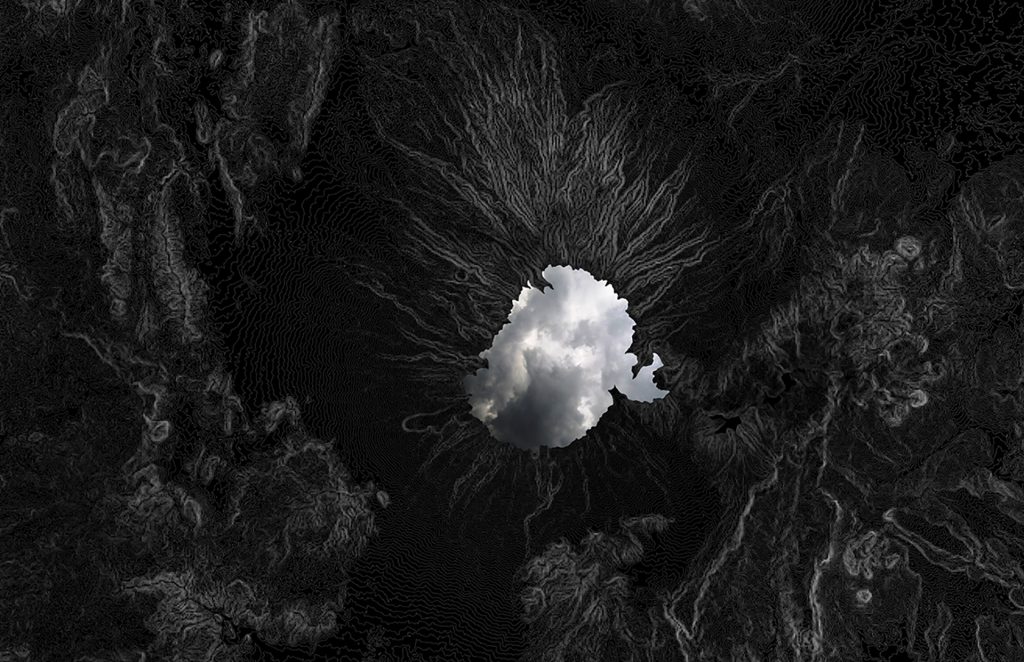
Inhabiting Java’s Volcanic proposes an alternative entry point to Jakarta’s narrative as the quintessential megacity-at-risk. Looking past the rhetoric of coastal vulnerability to study the forms of living that have unfolded in Java’s highlands, the project sheds light on a volcanic landscape that seems to provide a lexicon that allows a different approach to describe, interrogate and intervene Jakarta’s spatial organization. This language reveals then that inhabiting is in closer terms to active configurations rather than informal or ephemeral occupations. For this reason, to see Jakarta as volcanic, opens a possibility for designers to work with gradients of human and nonhuman agency and release their imagination from the binaries that neutralize design’s agency in the first place. We believe that Jakarta manifests a proximity to geologic time that demands a different set of precedents in order to move beyond the “global city” aspiration.
In an inversion of the techno-managerial concept of risk, Inhabiting Java’s Volcanic establishes an alternative paradigm of material propagation and absorption of turbulence. You are looking at morphologies that, in opposition to those born of attempts to control, unfold value out of environmental contingency. Pre-mapping a territory that is yet to be recognized, this project proposes the volcanic as a dynamic set of geo-social relationships, configuring and reconfiguring points of activity and patterns of mobility, and resulting in an endemic spatiotemporal framework.
In the process of assembling an open-ended list of patterns, Inhabiting Java’s Volcanic suggests that there exist precedents to be considered for an alternative, decentralized model of adaptation – one that derives knowledge and accumulates coping capacities through controlled exposure to the environmental dynamics while providing both economic and cultural anchorage. By articulating vital links between the geologic agency and local practices, the project gestures towards a future reassembly of regional economies and systems of habitation around an endogenous material logic: that of the volcanic territory. Privileging configurations that allow for intensive socio-environmental engagements, this calls for the decolonization of our design imaginary.
Sponsored by the Harvard Asia Center, Harvard GSD Community Service Fellowship Program, Fulbright Scholarship
